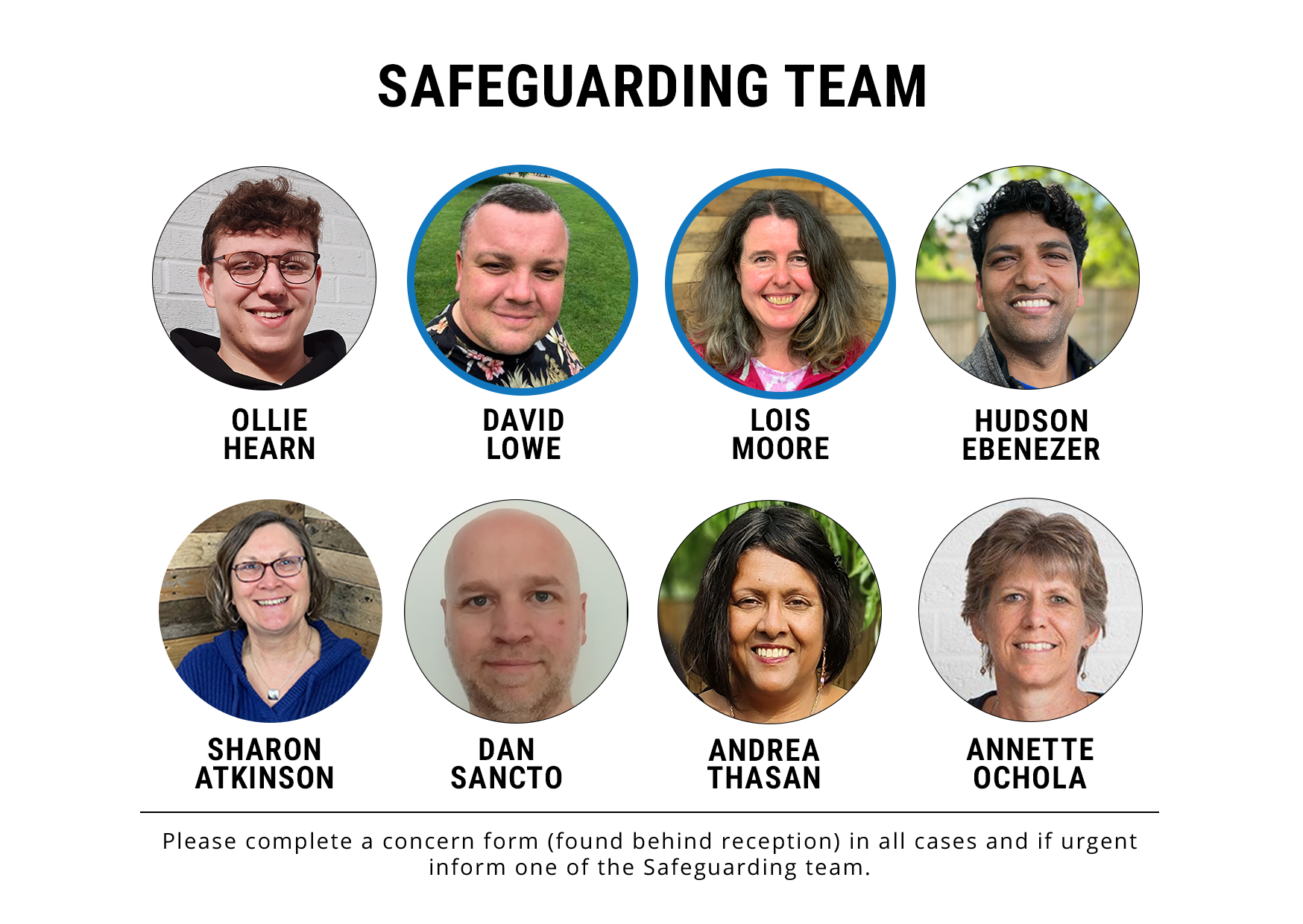SEE SOMETHING, SAY SOMETHING, DO SOMETHING
DESIGNATED SAFEGUARDING OFFICERS
Name: David Lowe - Safeguarding Lead
Name: Lois Moore - Safeguarding Lead
Name: Andrea Thasan - Trustee
Name: Hudson Ebenezer - Elder
Name: Ollie Hearn
Name Annette Ochola
Name: Dan Sancto
Name: Sharon Atkinson

POLICY REVISION IMPLEMENTED ON 07/11/2023
Next policy review date: 01/10/2024
CHURCH DETAILS
Woodside Church (hereafter, “The Church”)
Woodside Christian Centre, Dover Crescent, Bedford, MK41 8QH
Woodside Church is a member of the Evangelical Alliance and works in association with Newfrontiers.
Registered Name: Woodside Church
Charity Number: 1186318
Company Number: 12279065
CHURCH STATEMENT
The church has a growing ministry with children, young people and vulnerable adults. The Leadership Team (hereafter, “the LT”) takes seriously its responsibility to protect and safeguard the welfare of children, young people and vulnerable adults entrusted to the church’s care.
CHURCH MISSION
As part of the mission, the LT is committed to:
- Listening to, relating effectively and valuing children, young people and vulnerable adults whilst ensuring their protection within church activities
- Encouraging and supporting parents/carers
- Ensuring that all workers are given support and training.
- Having a system for dealing with concerns about possible abuse
- Maintaining good links with the statutory safeguarding authorities
AREAS OF POLICY
The LT recognises that many children, young people and vulnerable adults today are the victims of neglect, physical, sexual, spiritual and emotional abuse. Accordingly, the LT has adopted the policy contained in this document, (hereafter “the policy”). The policy sets out agreed guidelines relating to the following areas:
- Responding to allegations of abuse, including those made against leaders or members of the church.
- Appointing all workers
- Supervision of activities and practice issues
- Helping victims of abuse
- Working with offenders
The LT recognizes the need to build constructive links with safeguarding agencies.
The local Integrated Front Door (previously Multi Agency Support Hub or MASH) is available for all who are implementing this policy - this is to access the Bedford Borough Safeguarding team. The telephone number between 9.00am and 5.00pm is 01234 718700, the out-of-hour number known as the Emergency Duty Team is 0300 300 8123.
The content of the policy has formed the basis of training for all children, youth and vulnerable adult workers in the church. The LT is committed to an on-going training program for all such workers.
WOODSIDE CHURCH TRUSTEES
Trustees Responsibilities:
A designated Trustee-Director should be part of the safeguarding team, attend safeguarding meetings and bring a breakdown of safeguarding issues to every Trustee-Director meeting. This breakdown should provide a clear overview: categorizing each concern by activity, area of the church where the concern was identified, the type of safeguarding concern that is covered, total number of concerns and level of progression. This will enable and empower the Trustee-Directors to spot if there are any patterns or areas of concern. The report will be sent to the Trustee-Directors in advance of the meeting so that they can see all current issues and be equipped to raise any concerns in the meeting.
The Trustee-Directors hold the right to ask for the full details, including the initial report and actions taken, for any safeguarding concern.
All Trustee-Directors will be required to complete the Safeguarding training in their role as a Trustee-Director.
Any Safeguarding concerns that are escalated to the Trustee-Director level will require a meeting of the Chair and Deputy Chair of the Trustee-Directors.
THIRTY ONE EIGHT MEMBERSHIP
Woodside Church are members of Thirtyone:eight who specialise in providing Safeguarding support to religious organisations, They have a wealth of resources as well as knowledgeable people who care and understand the needs of religious organisations. Not only do they provide Safeguarding admin support but they also process and verify any DBS applications on behalf of all paid staff and volunteers at Woodside Church.
You can view and download the full Woodside Safeguarding Policy here.
Please find relevant forms below,
FORM 7a - Woodside Recording Concern Form
HELPFUL CONTACTS:
Samaritans 116 123
NHS non- emergency 111
Emergency Duty Team 0300 300 8123
SEPT Mental Health Out of Hours Service: 0300 1238123
Bedford Police 01234 271212
Charity Number 1186318. Company Number 12279065 | Hosted by Krystal
